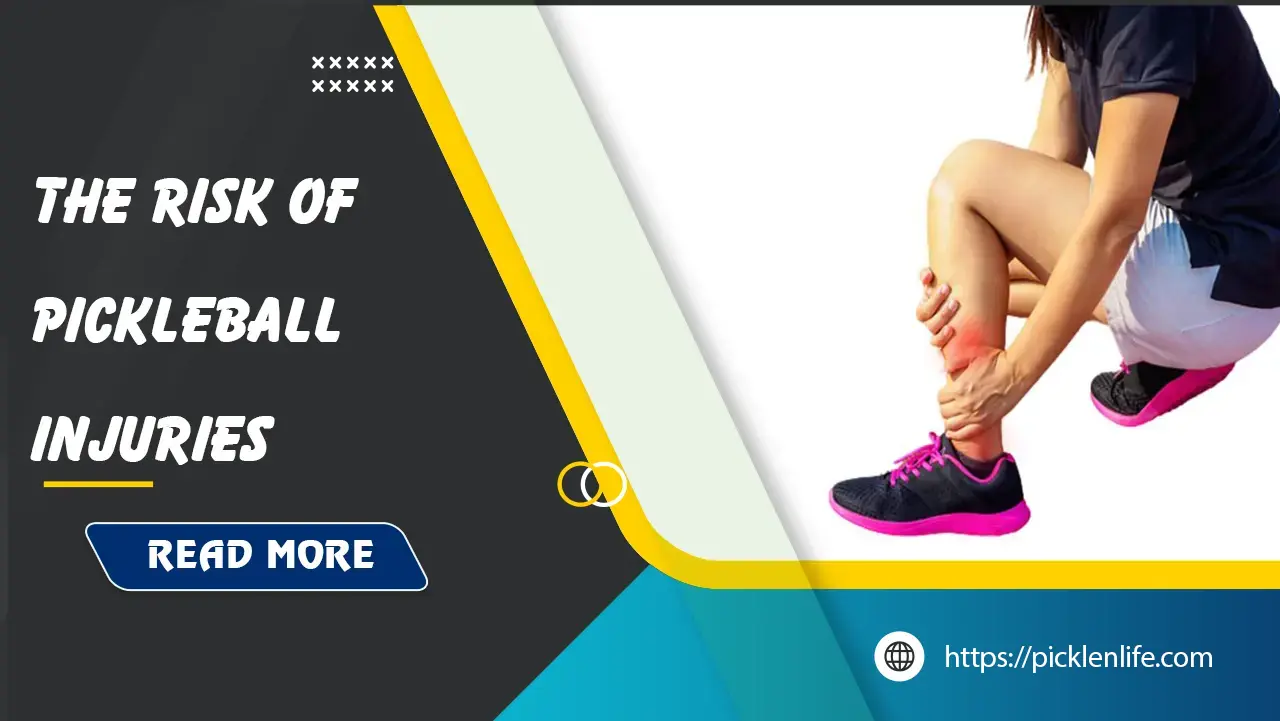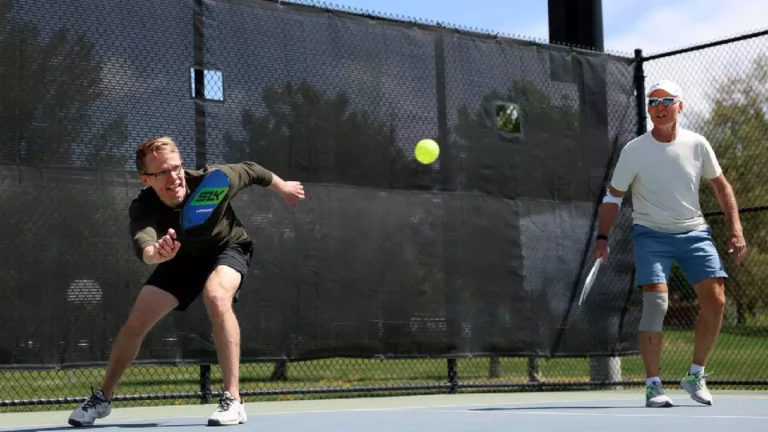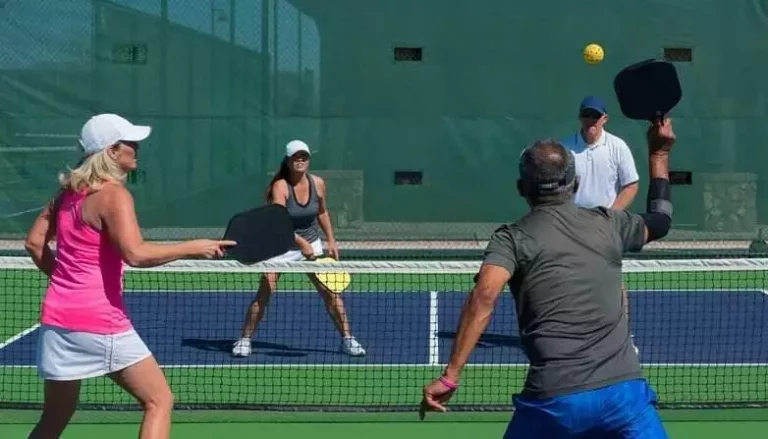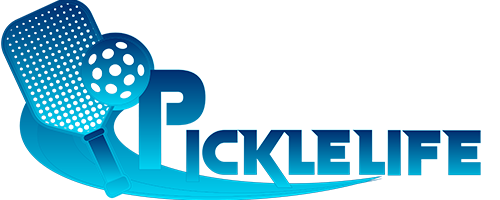Pickleball Injuries: Staying Healthy and Safe on the Court
The sport of pickleball has swiftly captured the hearts of many, especially older adults, as it marries elements of tennis, badminton, and table tennis. Despite its soaring popularity, this rise has brought with it a worrying trend: an increase in injuries among players. According to research, the most frequent injuries associated with this enjoyable pastime are bone fractures and soft tissue damage, with data showing a staggering rise of 200% in such injuries over the past two decades. Understanding the factors that lead to these pickleball injuries and how we can mitigate risks is imperative for players eager to enjoy the game safely.

Understanding the Risks
Before diving into the world of pickleball, players need to familiarize themselves with the risks involved. Awareness of injury statistics and common injuries can significantly influence how one approaches the sport. In 2023 alone, it was estimated that over 66,750 emergency department visits in the U.S. were attributed to play-related injuries. This rising number unveils a pressing concern for player safety.
The primary causes of injuries stem from the unique physical demands of the game combined with the demographics of the sport’s participants. Many individuals new to pickleball might not fully grasp how their bodies will react to the fast-paced movement required. The issue is particularly acute among older adults. Research identifying age-related vulnerabilities reveals that those aged 60 to 69 are especially susceptible to injuries, with falls accounting for 92% of fractures recorded in recent studies.
To add another layer to the statistics, approximately 19,000 pickleball-related injuries necessitate emergency treatment in the United States every year, particularly among players over 50 years old. Understanding these statistics equips players with the necessary knowledge to navigate their participation in this thrilling sport while prioritizing their health.

The rise of pickleball and its injury impact
The dramatic rise in popularity of pickleball has led to not only a surge in participants but also an increase in injuries. Beyond the joy of engaging in a dynamic activity, players must recognize that their enthusiasm can lead to unfortunate physical setbacks. With more players flocking to courts across the nation, injuries now appear as common as smiles on players’ faces, posing a significant challenge to the sport’s overall enjoyment.
The consequences of these injuries extend beyond physical pain. As more venues invest in infrastructure and enthusiasts pay to join clubs, the economic ramifications of injuries become apparent. For example, engaging in this loved sport can turn into a financial burden if expenses for medical treatment for injuries arise. The costs can be high for both injured players and the healthcare system, creating a ripple effect felt throughout communities.
But it’s not all doom and gloom. Recognizing the risk is the first step towards developing preventative measures that keep players safe while allowing them to relish in the joy of the game.
Common pickleball injuries by body part
Every sport has its unique set of injuries, and pickleball is no exception. Understanding the common injuries by body part allows players to take preventive measures consciously. Here is a breakdown of some of the prevalent injuries:
- Ankle Injuries: Ankle sprains are common in pickleball, particularly due to the quick lateral movements required during play. To avoid such injuries, players should ensure proper footwear with ankle support.
- Wrist Injuries: Frequent paddle usage can lead to repetitive strains or sprains in the wrist. By incorporating wrist-strengthening exercises into a training regimen, players can mitigate this type of injury.
- Shoulder Injuries: Given the motions involved in striking the ball, rotator cuff injuries are not unusual. Strengthening programs focused on shoulder stability are crucial for prevention.
- Knee Injuries: The sudden changes in direction can lead to knee injuries, including cartilage damage. Players should maintain a strong core and leg strength to support their knees effectively.
- Back Injuries: Poor form and sudden movements can lead to back issues, primarily for players who are less accustomed to the physical demands of the sport.

Having a good understanding of these injuries encourages players to approach their training and technique conscientiously.
Who’s Most at Risk?
What makes some players more vulnerable to injuries than others? Various elements play a role, such as age, physical conditioning, and pre-existing health concerns. The most significant risk factor lies undoubtedly in the demographics of players.
Individuals over the age of 50, especially women, face a higher risk of fractures, often stemming from conditions like osteoporosis. As bones become more fragile with age, they become susceptible to fractures from falls, which have been noted to be the cause of 92% of related injuries.
Moreover, players’ fitness levels are crucial. Many new players dive into the game without adequate conditioning, which may increase their likelihood of injuries. Engaging in the sport without a well-rounded fitness base can exacerbate physical vulnerability.
Being aware of overuse injuries is also essential. The repetitive nature of pickleball, with fast swings and quick steps, can lead to chronic injuries such as “pickleball elbow.” Regular evaluations and tailored fitness plans can help counteract these risks.
Preventing Pickleball Injuries: A Comprehensive Guide
Preventing pickleball-related injuries starts with education and preparation. A pivotal part of staying injury-free is engaging in proper warm-up routines, which prepare the body for the physical demands of the sport. Dynamic stretching significantly enhances flexibility and range of motion, effectively reducing the risk of injuries.
Warming up not only prepares muscles but also mentally primes players for the game ahead. This transition into gameplay can greatly impact overall performance, making for a much more enjoyable experience on the court.
Practicing appropriate strength training tailored to pickleball helps build and maintain muscle. In this regard, a perfect blend of core strength, leg strength, and shoulder stability focuses on the essential areas where injuries often occur.
The importance of a dynamic warm-up
Dynamic warm-ups have gained appreciation as effective injury prevention tools among athletes. These involve several movements that mimic the activities players will perform during their games.
Benefits of warm-ups:
- Increased Blood Flow: A good warm-up boosts circulation, enhancing muscle readiness.
- Enhanced Flexibility: Dynamic stretches improve flexibility, allowing for greater movement range during play.
- Injury Prevention: Proper warm-ups reduce muscle tightness, minimizing the risk of strains and sprains.
Example Routine:
- Arm circles
- High knees
- Leg swings (front and side)
- Toe touches
- Lunges with a twist
Adopting these warm-up practices can set a winning tone for games while dissipating the risk of injury.
Strengthening Your Pickleball Muscles
To thrive and engage safely in pickleball, players need to establish solid muscle strength. Targeted exercises can fortify and stabilize critical muscle groups, reducing injury risks.
Strength training exercises for pickleball include:
- Core Strength: Planks, dead bugs, and Russian twists enhance core stability essential for maintaining balance on the court.
- Leg Strength: Squats, lunges, and calf raises strengthen leg muscles, aiding in agility during play.
- Shoulder Stability: Rotator cuff exercises with resistance bands help protect against shoulder injuries.
Incorporating these exercises into training routines steadily builds a player’s resilience against common injuries, creating a robust foundation for successful gameplay.
Choosing the Right Gear for Safety and Support
Selecting appropriate gear is vital for safety and effectiveness on the pickleball court. High-quality pickleball shoes designed for lateral movements significantly reduce the risk of ankle injuries. Proper heel support along with a sturdy grip can enhance performance while safeguarding against slips.
Moreover, understanding paddle grip size contributes to players’ safety. An incorrect grip can strain the wrist, leading to injuries detrimental to overall gameplay. Investing in protective gear, such as knee and elbow pads, can also enhance player safety in the event of falls.
Court surfaces play a role in injury prevention as well. Smooth and well-maintained surfaces diminish the chance of tripping and aid in maintaining stability during quick changes in direction.

Playing Smart: Technique and Strategies for Injury Prevention
Acquiring the right technique is paramount in any sport, and pickleball is no exception. Understanding movement patterns can significantly decrease injury risks and improve overall gameplay experience.
Proper technique includes:
- Safe Movement Patterns: Players should always maintain optimal posture while moving around the court. Engaging the core muscles during play can reduce undue strain on the back.
- Avoiding Risky Shots: Learning to recognize when to rally or let a ball go can help prevent unnecessary falls or twisting movements that could lead to injuries.
- Court Awareness: Players must remain vigilant in understanding their surroundings and anticipate others’ movements. Awareness prevents collisions that often lead to injuries.
A strategic and informed approach to the game maximizes safety while allowing players to enjoy all that pickleball has to offer.
Managing Pickleball Injuries
In the unfortunate event of an injury occurring, knowing how to manage it effectively is crucial in facilitating recovery. Quick action can make a difference and allow players to get back on the court sooner.
First Aid for Pickleball Injuries
The RICE protocol which stands for Rest, Ice, Compression, and Elevation is a universally recognized approach to managing sports injuries.
- Rest: Cease activity to prevent further injury.
- Ice: Apply a cold compress to reduce swelling.
- Compression: Use a wrap to minimize swelling.
- Elevation: Elevate the injured area above heart level, reducing swelling as fluid drains from the injured area.
It’s vital for players to perform an initial injury assessment, understanding the severity of their condition and deciding on the best course of action.
When to Seek Medical Attention
Some injuries may require professional evaluation. Signs of a serious injury include fractures, dislocations, or persistent pain that does not improve.
Being attentive to symptoms, such as localized swelling or inability to bear weight, will help players discern when to consult a physician for proper diagnosis and treatment.
Getting Back on the Court: Pickleball Rehabilitation
Rehabilitation must be approached with diligence. Engaging in pickleball-specific rehabilitation exercises and physical therapy can aid injury recovery while ensuring a safe return to play. Following prescribed exercises, players can develop strength and restore mobility while minimizing the risk of re-injury.
Creating realistic recovery timelines, players should aim for a gradual return to their previous level of play. The last thing anyone wants is to rush back onto the court and risk further setbacks.
Beyond Physical Health: The Mental Game of Pickleball
Engaging in pickleball does not only involve the physical aspects; the mental game holds equal importance. Managing competitive pressure and maintaining a positive mindset are crucial for performance and well-being.
Dealing with Competitive Pressure
Players often face the arduous task of managing expectations during match play. Setting attainable goals and maintaining a healthy outlook on competition fosters enjoyment of the sport rather than contributing to stress.
Mindfulness techniques, such as breathing exercises and visualization, can enhance focus and calm nerves. Practicing mindfulness before matches creates a clearer mindset, enabling players to fully engage with the game.
Staying Positive After an Injury
Injuries can challenge one’s morale. Fostering a sense of resilience and focusing on recovery pathways are key in maintaining motivation throughout rehabilitation.
Connecting with support groups and sharing experiences with fellow players can provide emotional encouragement. Finding fulfillment through adjusted play or supportive coaching can help transition focus from injury setbacks back to the joy of play.
Pickleball and Social Connection
Lastly, the social aspect of pickleball cannot be understated. As players gear up for games, they form bonds that build community and foster healthier interactions. These connections are vital components that promote emotional well-being and enhance the overall enjoyment of the sport.
Resources for Pickleball Players
For those eager to deepen their understanding and commitment to injury prevention, several resources can offer support.
Find a qualified pickleball instructor
Identifying certified pickleball instructors enhances learning and can help novices grasp proper techniques. Engaging with experienced coaches paves the way for safer skills development.
Connect with sports medicine experts
Engaging with sports medicine professionals, such as physical therapists and orthopedic specialists, can provide insight into safe play, injury prevention, and recovery strategies. Understanding individual fitness levels is essential for creating a tailored approach to engaging in pickleball.
Explore pickleball organizations and communities
Organizations like the USA Pickleball Association (USAPA) offer excellent resources, including clubs, instructional materials, and community events. Online forums further provide players with a platform to share experiences and seek advice from other pickleball enthusiasts.
When considering the compelling confluence of excitement and risk within the realm of pickleball, the necessity for awareness and injury prevention becomes unequivocal. Taking proactive measures enables players to indulge in this captivating sport while ensuring their well-being. As we rally to create a safe playing environment, we embrace not only the sport itself but the vibrant community it fosters.
